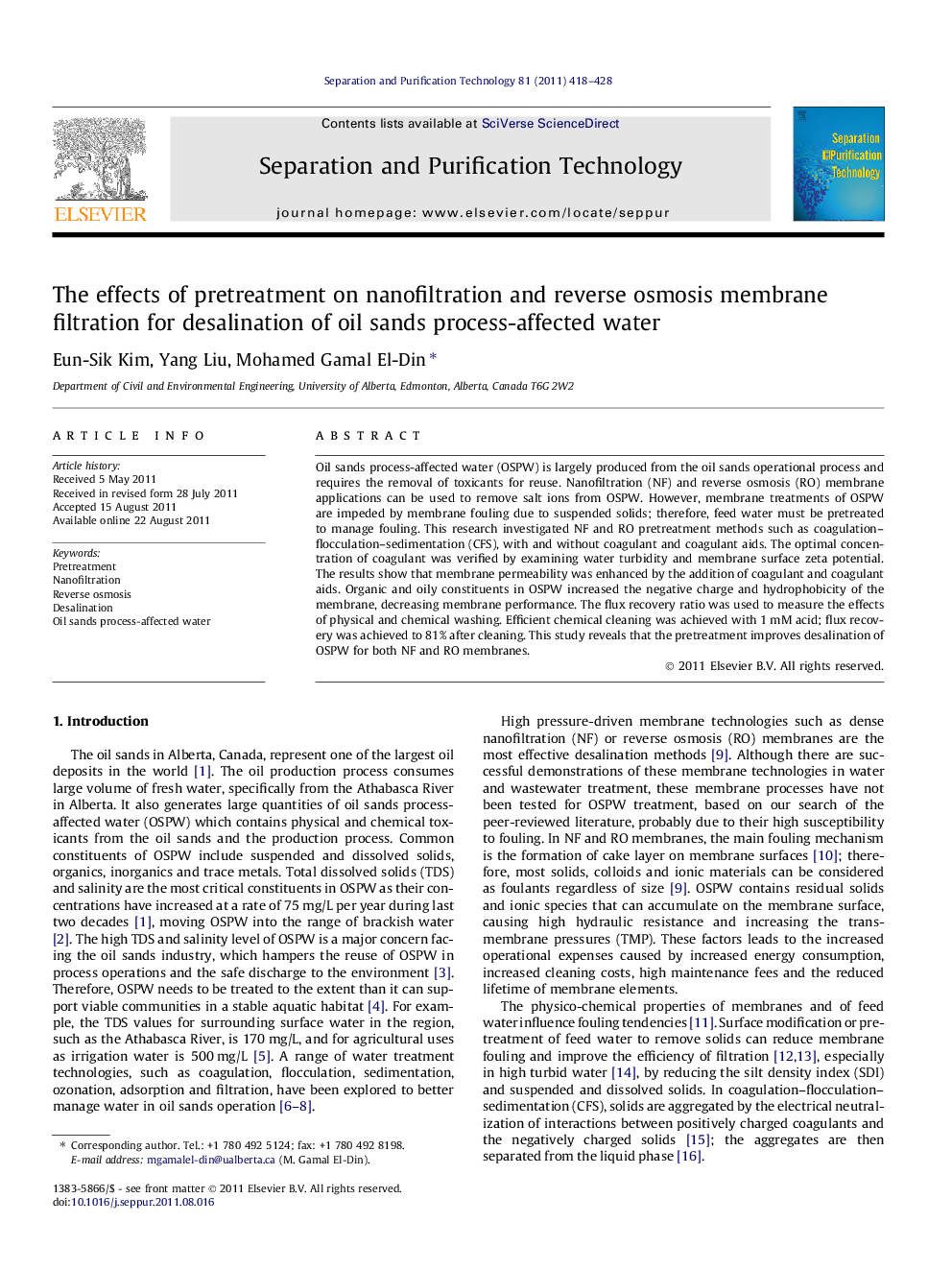| Article ID | Journal | Published Year | Pages | File Type |
|---|---|---|---|---|
| 642529 | Separation and Purification Technology | 2011 | 11 Pages |
Oil sands process-affected water (OSPW) is largely produced from the oil sands operational process and requires the removal of toxicants for reuse. Nanofiltration (NF) and reverse osmosis (RO) membrane applications can be used to remove salt ions from OSPW. However, membrane treatments of OSPW are impeded by membrane fouling due to suspended solids; therefore, feed water must be pretreated to manage fouling. This research investigated NF and RO pretreatment methods such as coagulation–flocculation–sedimentation (CFS), with and without coagulant and coagulant aids. The optimal concentration of coagulant was verified by examining water turbidity and membrane surface zeta potential. The results show that membrane permeability was enhanced by the addition of coagulant and coagulant aids. Organic and oily constituents in OSPW increased the negative charge and hydrophobicity of the membrane, decreasing membrane performance. The flux recovery ratio was used to measure the effects of physical and chemical washing. Efficient chemical cleaning was achieved with 1 mM acid; flux recovery was achieved to 81% after cleaning. This study reveals that the pretreatment improves desalination of OSPW for both NF and RO membranes.
► Pretreatments of oil sands process-affected water (OSPW) for membrane filtration. ► Removal of solids is important to prevent membrane fouling in OSPW treatments. ► The pretreatment processes can physico-chemically affect on OSPW desalination. ► Chemical cleaning can clean the OSPW fouled NF and RO membranes.
